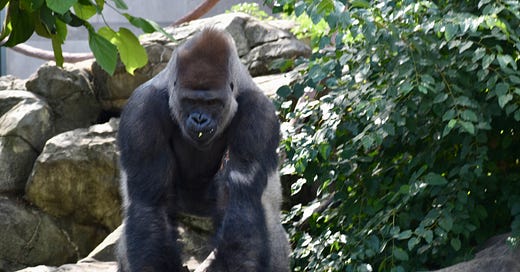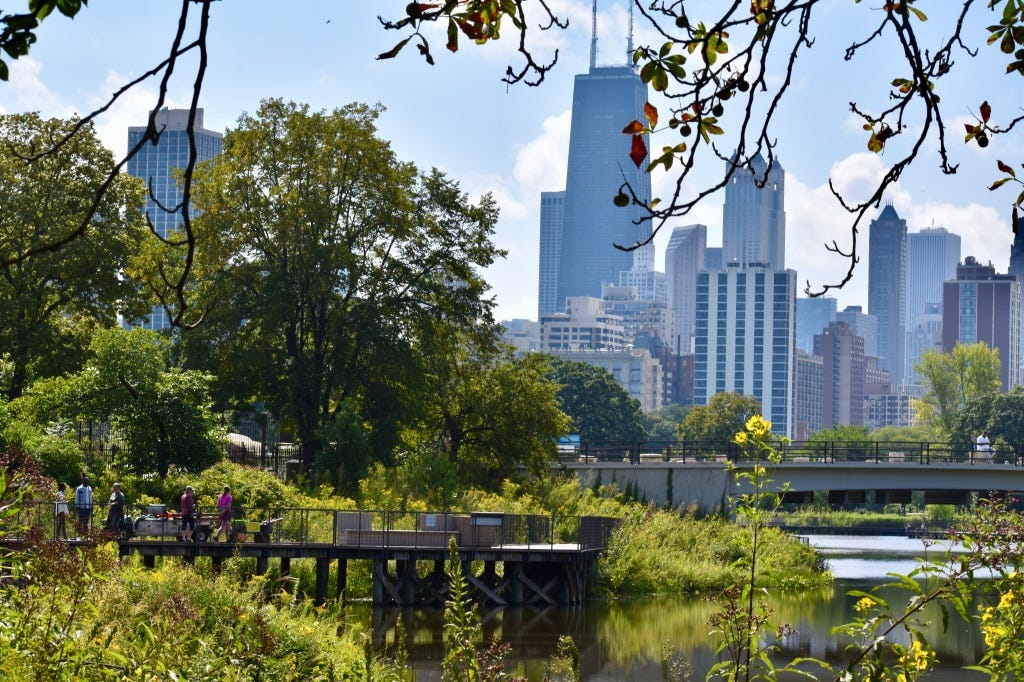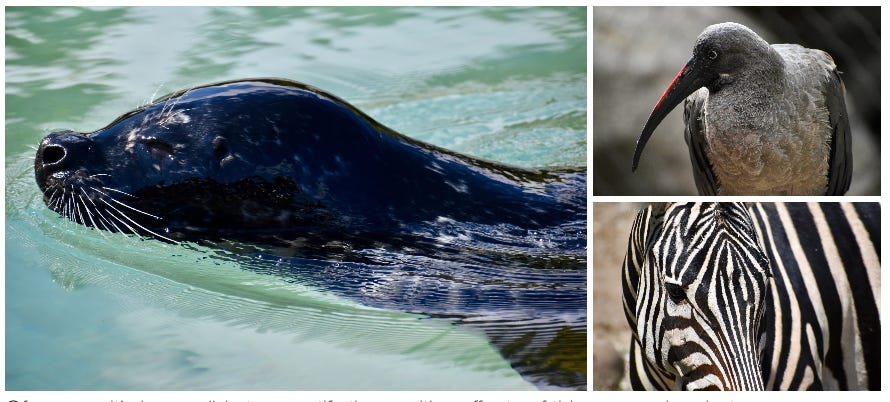Sunshine and sixty-eight degrees on an early September day couldn’t be a better time to revisit the Lincoln Zoo in Chicago.
It was my second trip to the nation’s fourth oldest zoo founded in 1868.
Well, technically my second trip.
The first was 20+ years ago when a high school friend was getting married at an adjacent Foreman Pavilion. Since the Lincoln Zoo is free, me and my wife (and maybe others?) ducked into the zoo before we headed down to the Shedd Aquarium where they had their reception. Needless to say, it was a cool-ass wedding.
I don’t think we saw that much on that day, but with my wife and her sister in hand we took in nearly everything the second time around. As a level-set, the only other zoos I’ve been to are the Central Park Zoo (once, solo on a business trip) and my hometown Detroit Zoo a handful of times.
The last time I was at the Detroit Zoo my daughter was a young teenager who has grown up to be an animal rights advocate who shuns zoos. Not militantly, but in general. Given her influence and my own conflicted thoughts over the years I was interested in how I would feel going to a zoo again in person.
Not to give away the ending, but the bottom line is that I’m still conflicted.
But, before we get to the larger, philosophical issues, a few thoughts on Lincoln Park.
Firstly, it’s beautiful and an amazing setting for a zoo. With its view of the towering skyline, it’s a unique oasis. Central Park is similar, but not as dramatic. And while I haven’t been there in quite some time, when I was it still had a mid-twentieth century zoo vibe, which, even then, seemed outdated and close to inhumane.
Lincoln Park has obviously been upgrading to a new era of zoos, all the while maintaining the architectural aesthetics of the original buildings. It’s a great mix of old and new that way. It’s also a very manageable zoo. You don’t need to be a marathon runner to see everything. And it has basically everything you want to see at a zoo. Some species might not be in the same numbers as at larger ones, but I was happy for the tradeoff.
The new exhibits seem to give to animals a decent amount of room in naturalistic settings.
This “upgrade” is, as far as I’ve gleaned, the norm for most modern zoos. In fact, back when I was a journalist in the late 1990s I interviewed Detroit Zoo Director Ron Kagen about that new movement which was just taking off. Back then, Detroit opened one of the largest and most realistic primate habitats in the country. That trend has continued at accredited zoos across the country.
I think we can all agree that Zoos have come a LONG way from literal prison cells where chimps were forced to smoke cigars and perform for crowds. And God knows they were subject to a completely different level of care and affection.
But even with all the improvements, the ultimate question remains: To zoo or not to zoo.
Beyond improving enclosures, most modern zoos are staffed by deeply caring professionals who also try to make the lives of the animals as natural as possible given the obvious restrictions of captivity. Many zoo animals are rescues from their own destroyed environments or black-market animal shows that still happen way too much. They’re also a failsafe for any number of critically endangered species that they breed through elaborate programs that they employ for all their animals to insure safe genetic lines.
And then there’s the amorphous “IT” factor that I may hold onto too tightly.
I’m not sure that going to the Detroit Zoo as a kid sparked my life-long fascination and love of animals, but I know it didn’t hurt. And, in broad terms, that’s maybe the biggest factor in the “pro” zoo column.
Awareness.
The general understanding for untold children (and their parents) who come from cities and rural areas alike and see animals they would never be aware of if not for zoos. And the larger world that those animals represent.
Of course, you can turn on a TV or go online and see a million animal shows. But, if you’ve ever been to a zoo and seen a kid see a giraffe or python in person for the first time, you know that sense of IRL awe doesn’t compare to any screen.
Zoos also heavily (and rightfully) push a pro-environmental message, from deforestation to Climate Change. I noticed that the last time nearly a decade ago, and if Lincoln is any indicator, that message is being pushed even harder.
Of course, it’s impossible to quantify the positive effects of this messaging, but common sense dictates it does have untold impact. See a sloth in an animated movie. See one in real life. The next thing you know, you’re a kid interested in the deforestation of the Amazon.
But is it worth it?
As a kid myself, I was probably most interested in marine mammals, likely because of my trips to Seaworld and Marineland in Canada. As an adult I “swam” with dolphins three times, in the Bahamas, Key West, and Jamaica. And, I will tell you, those were damn-near spiritual events for me.
And yet, I’ve totally turned against the captivity of dolphins and whales for performance large or small.
But what is the difference?
Firstly, many of those mammals are still caught in the wild, which I don’t think is the case for most zoos, where there are generation of animals that only “know” captivity.
Yes, I think that’s a difference with a distinction.
Intellectually, I also try to justify it based on the “higher-brain” of some of those mammals. But how can I look a dolphin in the eye and say he should swim free and not do the same with an ape or chimp that share 98% of our DNA?
And while scientists have a decent handle on animal brains and how they work, are we really done learning? And even under the assumption that (say) reptiles, amphibians and insects are of a lower order, there’s something to be said for curtailing their “instinct” alone.
After all, we’re supposed to be at the top of the intellectual and emotional food chain.
All this certainly pushes one into the “no” zoo side.
Moral certainty always feels good. But, so much of real life is lived in the gray ambiguity of reality. Which is where I still find myself.
If forced to choose, I’d say keep the zoos open.
Keep improving them. For all species.
To that point, try to make a more natural environment to do what comes naturally in the food chain. Obviously, this isn’t going to be throwing a gazelle into the lions den. But instead of feeding times for seals, otters, etc., get some live salmon in the tank and let them do what they do. I can’t imagine the thrill of seeing a seal snag a fish out of the blue. Let alone the benefit it gives for the animal to retain those intrinsic skills.
Dedicate more profits not just to education within zoos but to fight to save habitat and repopulate it.
Take a harder line on any zoo corporate sponsorship that doesn’t align with environmental goals.
And set more rehabilitated animals free whenever possible.









